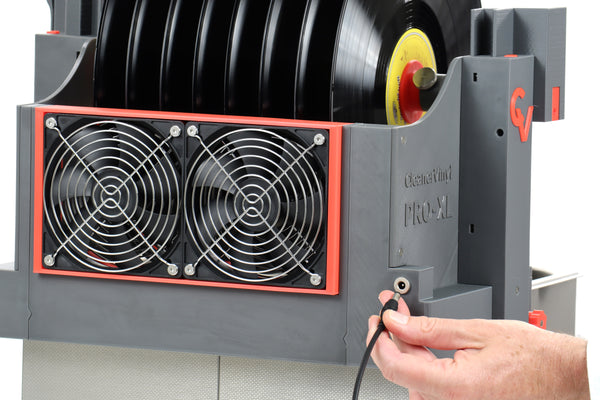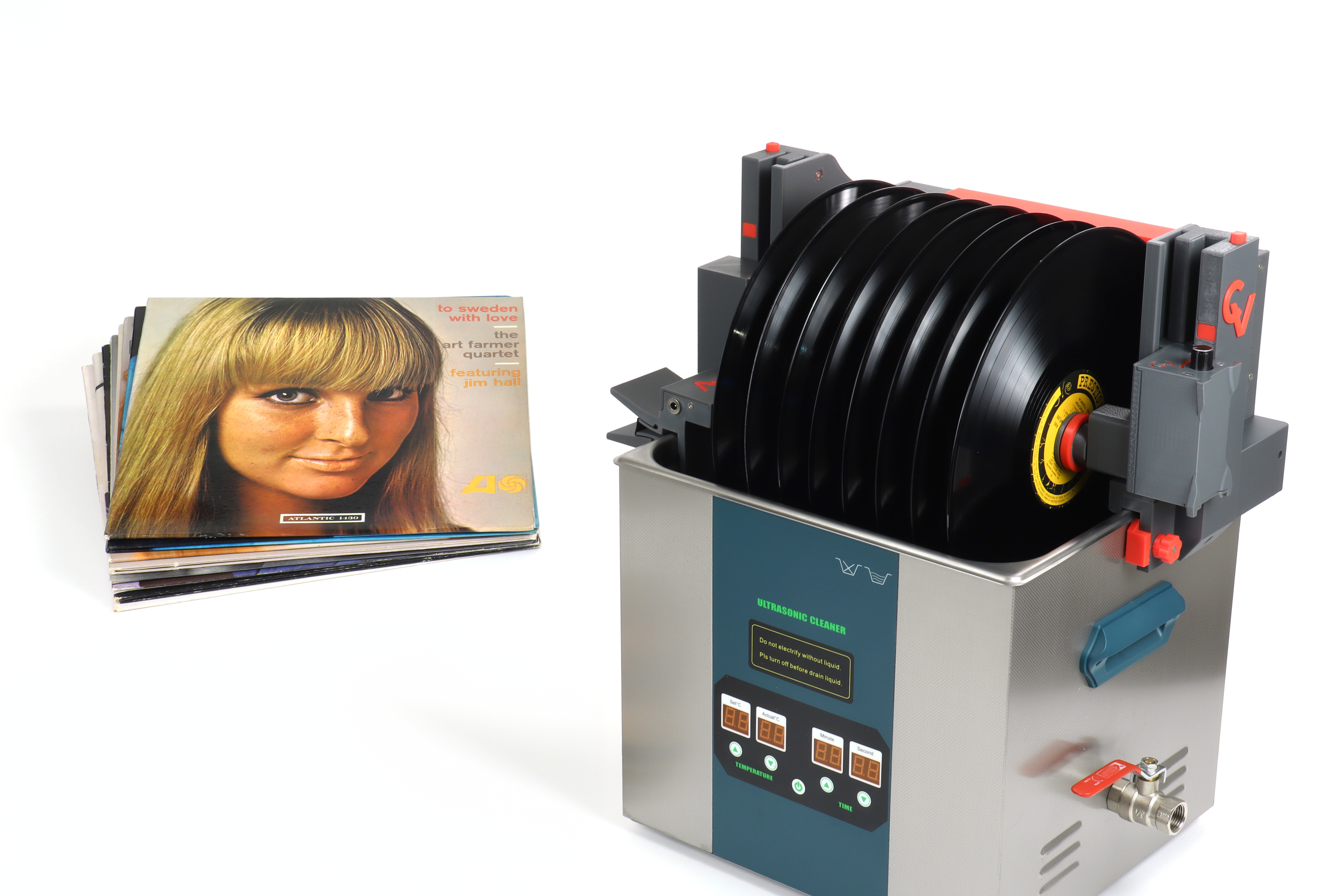
Air drying of vinyl records has several advantages:
- It is touch-less. Wipes and vacuum wands come in direct mechanical contact with the record surface and introduce micro-scratches, essentially negating one of the major benefits of ultrasonic record cleaning: It is touch-free and ultra low impact!
- Air drying can be used directly on the spinning record stack without the need for handling them in wet condition. Just move the motor unit into the drying position and turn on the fan. 25 min later remove the records and put them back into the sleeves. Never touch a wet record! It is the lowest effort method with the highest throughput.
- It does not introduce static charges on the vinyl surface. Objects are typically charged by contact with other objects (resulting in charge transfer between the objects). Mechanical contact with wands or wipes can cause static charges on the vinyl surface. Wiping essentially negates one of the main benefits of ultrasonic cleaning where charges are effectively removed from the vinyl during contact with the cleaning fluid.
- Air flow does not introduce new contamination. Since the records are free of charge after the ultrasonic cleaning process, dust in the air is unlikely to be attracted and will simply 'blow by' in the air stream. In contrast, wipes and wands frequently contain dust and lint, which can be transferred to the vinyl surface during their application.
Air drying of vinyl records has several advantages:
- It is touch-less. Wipes and vacuum wands come in direct mechanical contact with the record surface and introduce micro-scratches, essentially negating one of the major benefits of ultrasonic record cleaning: It is touch-free and ultra low impact!
- Air drying can be used directly on the spinning record stack without the need for handling them in wet condition. Just move the motor unit into the drying position and turn on the fan. 25 min later remove the records and put them back into the sleeves. Never touch a wet record! It is the lowest effort method with the highest throughput.
- It does not introduce static charges on the vinyl surface. Objects are typically charged by contact with other objects (resulting in charge transfer between the objects). Mechanical contact with wands or wipes can cause static charges on the vinyl surface. Wiping essentially negates one of the main benefits of ultrasonic cleaning where charges are effectively removed from the vinyl during contact with the cleaning fluid.
- Air flow does not introduce new contamination. Since the records are free of charge after the ultrasonic cleaning process, dust in the air is unlikely to be attracted and will simply 'blow by' in the air stream. In contrast, wipes and wands frequently contain dust and lint, which can be transferred to the vinyl surface during their application.
